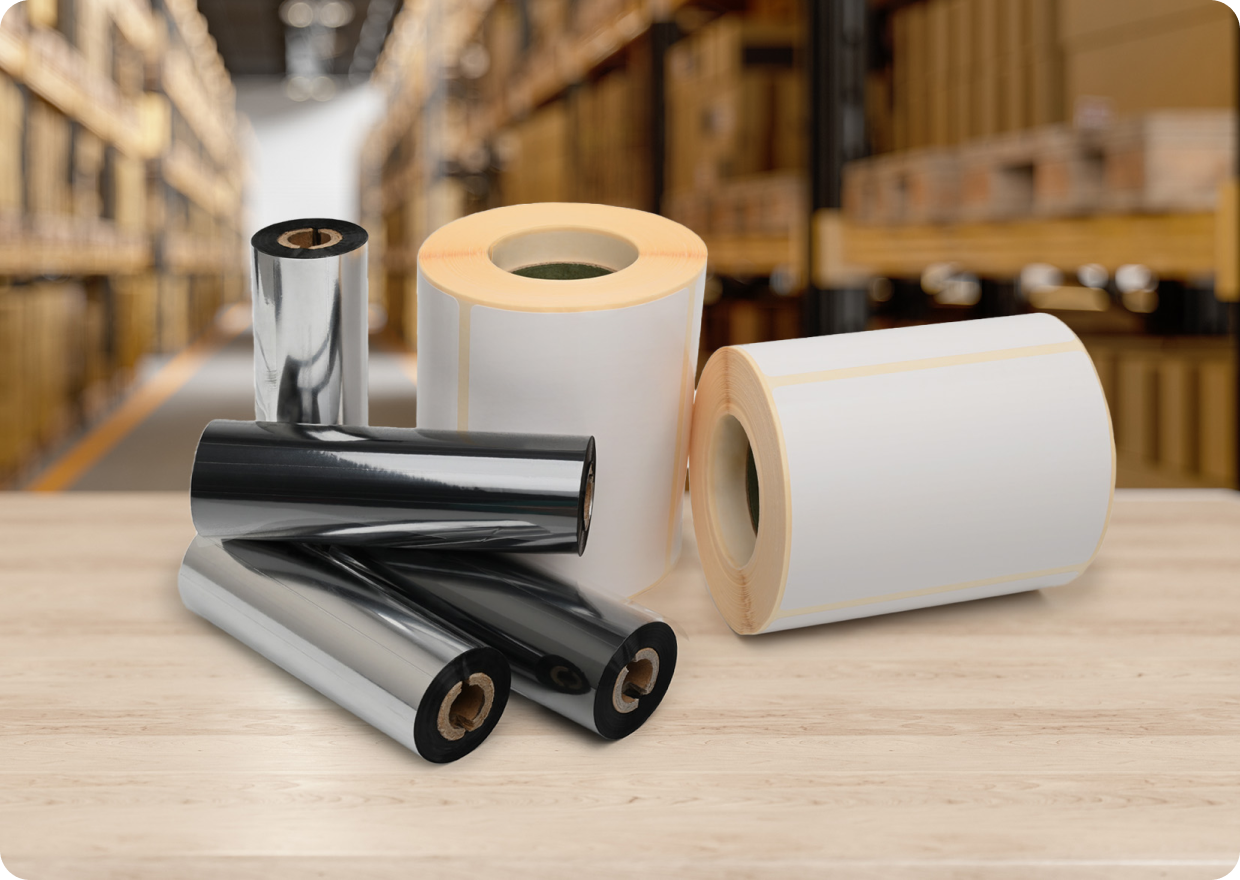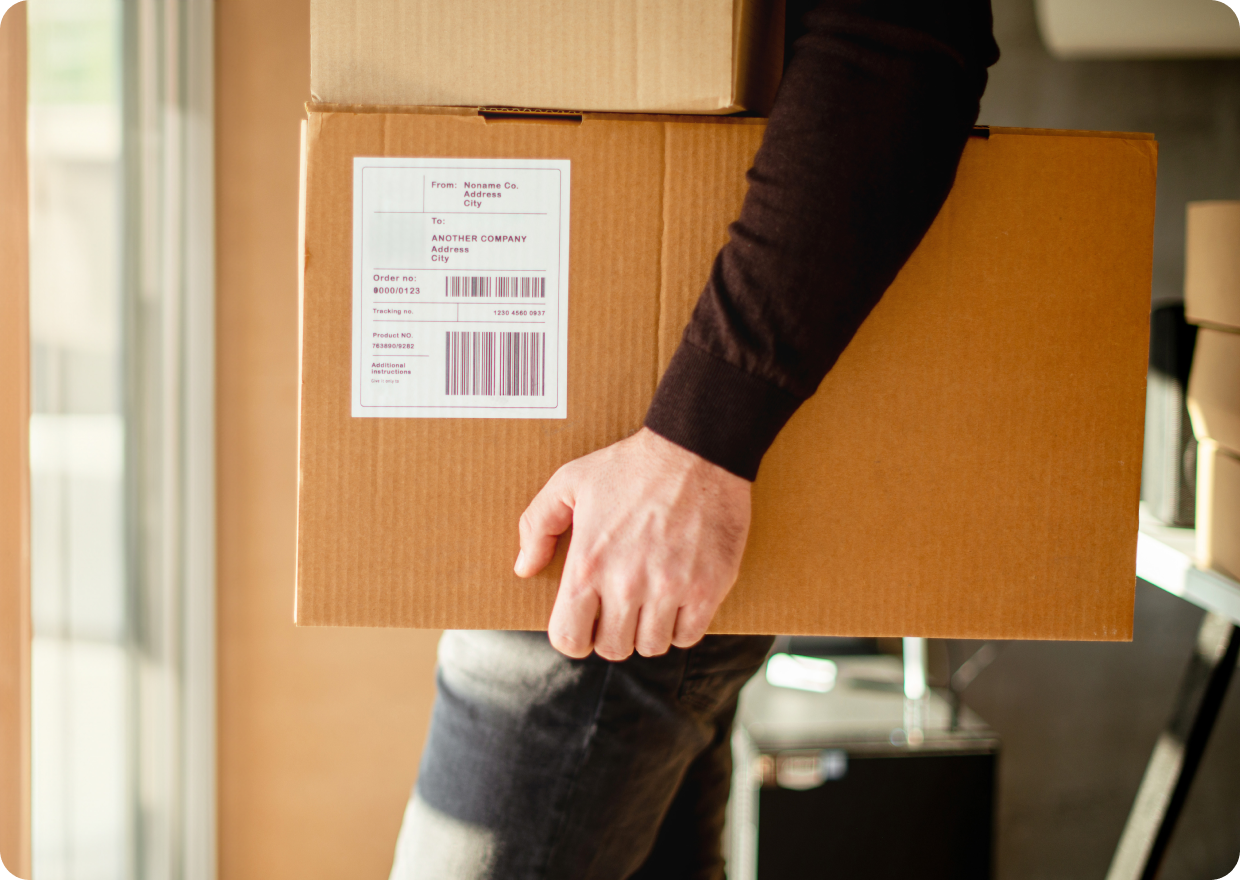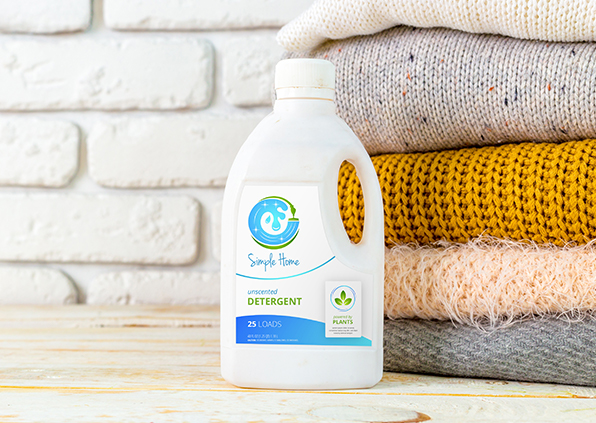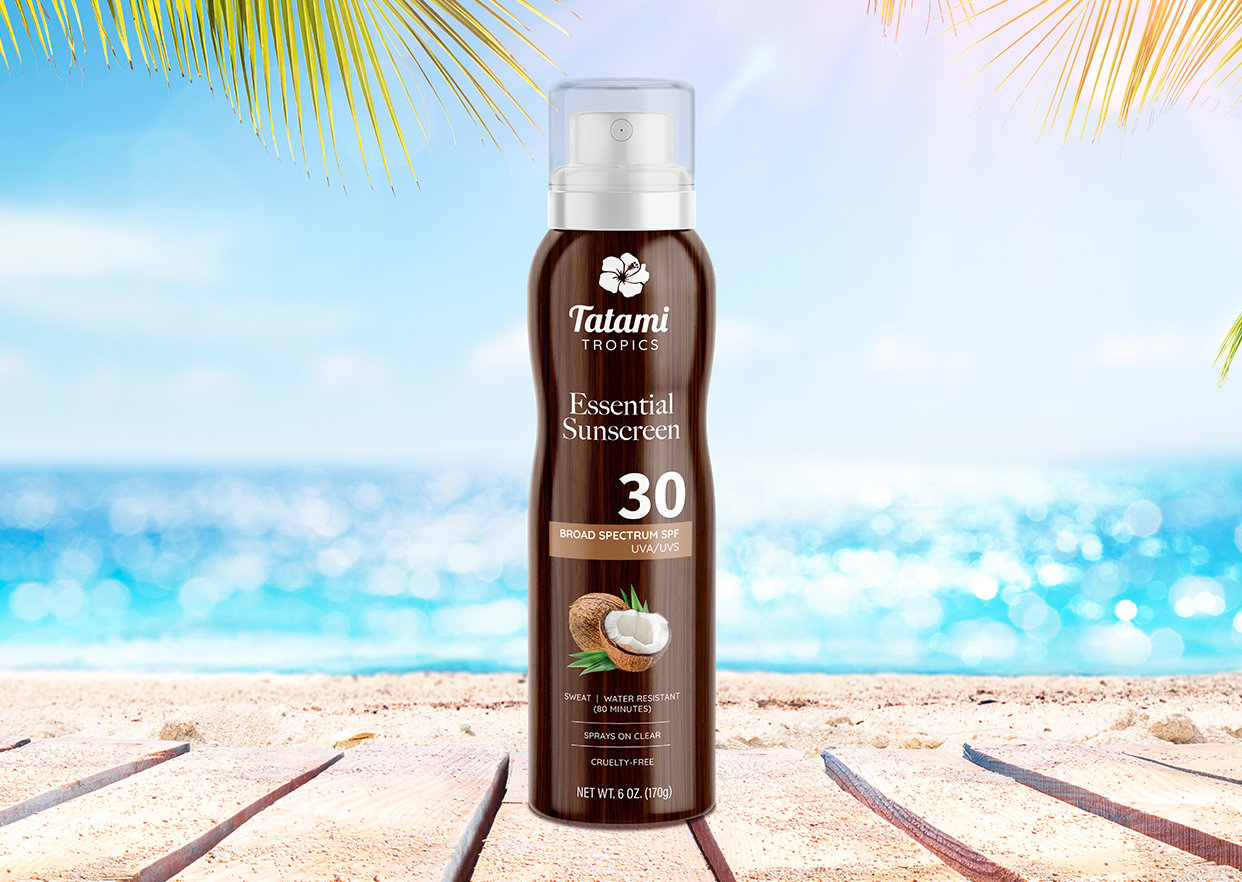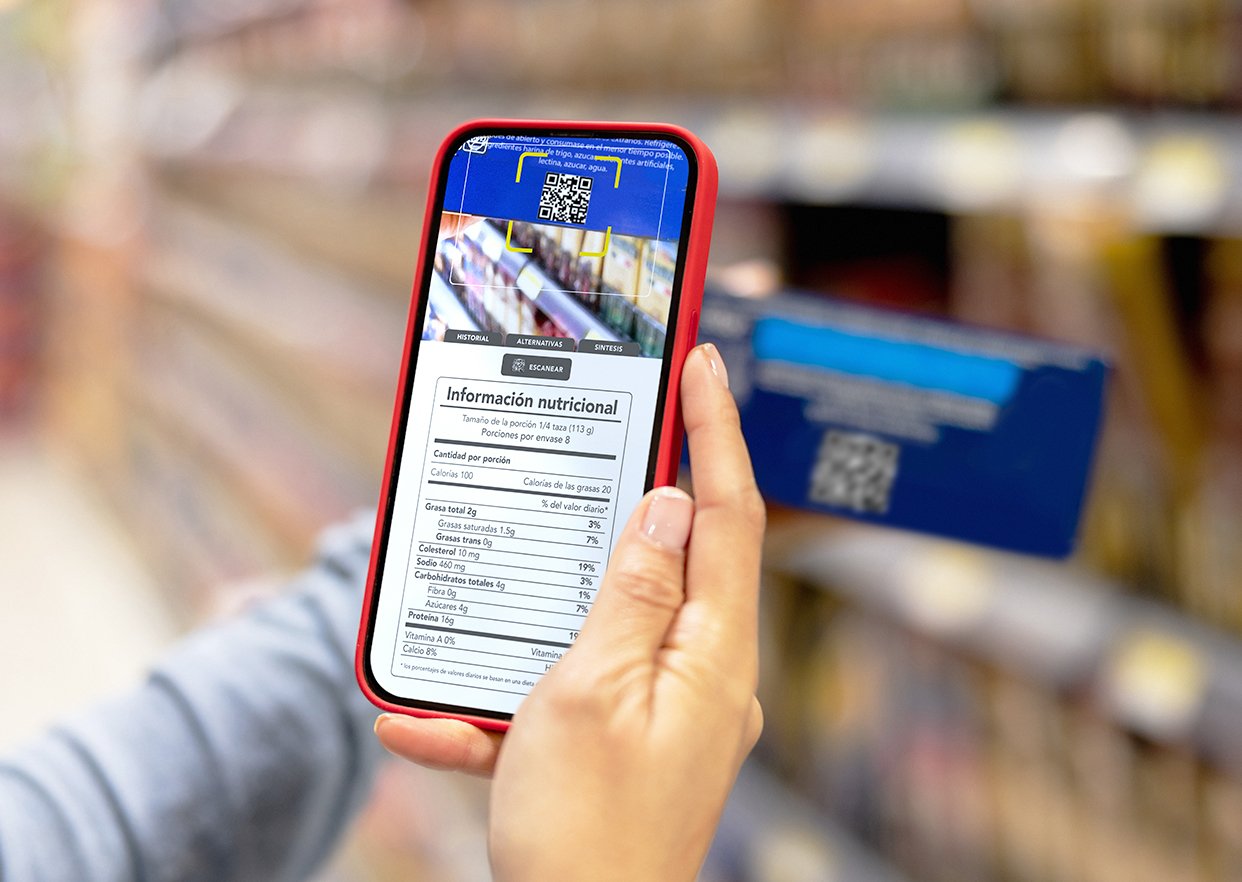Printed labels are estimated to be a $10 billion market annually in North America and many of those labels end up on the consumer packaged goods (CPG) we use each day. The sports drink in your fridge, the bottle of olive oil in the pantry and the bathroom cleaner in the hall closet are all decorated with one or more labels. Odds are, they are either roll-fed labels or a form of pressure-sensitive labeling. But what’s the difference between the two?

This blog will compare roll-fed labels and pressure-sensitive labeling, focusing on these five questions specifically:
- What are roll-fed labels and what advantages do they offer?
- What is roll-stock packaging and how is it different from roll-fed labeling?
- What is a pressure-sensitive label and what are its advantages?
- What is the difference between self-adhesive and pressure-sensitive?
- Which labeling solution is best?
What are roll-fed labels?
Roll-fed labels are commonly used in the manufacturing or decoration of bottles, jars, cans and other containers. The label construction is just like it sounds. Roll-fed labels are printed on long, continuous rolls. These label rolls are fed into labeling machinery on the production line and then cut and wrapped around the container with the help of glue or heat.
In terms of the materials used, roll-fed labels are most commonly made from one of a variety of plastic films including polypropylene, polyethylene and polyethylene terephthalate.

The advantages of roll-fed labels
- Roll-fed labels are easy to produce, making them especially cost-effective for large production runs.
- They are ideal for high-speed labeling processes such as those used in the food and beverage industry. The next time you have a bottled water or soft drink, stop to look at the label. It’s most likely a roll-fed label.
- Roll-fed labels are best-suited to cylindrical containers and can accommodate any height container.
- Roll-fed labels enable 360-degree coverage of the container, creating an eye-catching look that really “pops” on the retail shelf.
- Because they don’t incorporate a backing or release liner, roll-fed labels reduce the amount of waste generated by the decoration process.
- The use of plastic film as a substrate adds an element of durability to the finished label.
What is roll-stock packaging and how does it differ from roll-fed labeling?
Roll-stock packaging (also known as roll-fed packaging or roll-feed packaging) refers to a packaging material that comes in large rolls. Usually comprised of a flexible film, roll-fed packaging is used in form-fill-seal (FFS) machines to create packages like pouches, sachets or bags. The roll of packaging material is fed into a machine that forms the package, fills it with product, and seals it — all in one continuous operation.
The easiest way to remember the difference between roll-fed labels and roll-fed packaging is to look at the product container. If a label has been wrapped around an existing container of some sort (e.g., bottle, jar, can), you’re looking at a roll-fed label. If the package and the label are one unit (e.g., pouch, bag, sachet), you’re looking at an example of roll-feed packaging.
What is a pressure-sensitive label?
Pressure-sensitive labels are manufactured with an adhesive backing. They are applied by peeling off the release liner and using pressure to adhere the label to the product or package. Highly versatile and available in nearly any shape or size, pressure-sensitive labeling is commonly used for food packaging, cosmetics, pharmaceuticals and more.
The substrates used for pressure-sensitive labels commonly include both paper and synthetic options, similar to roll-fed labels. However, because they also incorporate adhesives, liners and (optionally) laminates and topcoats, pressure-sensitive labels are typically more expensive to manufacture than roll-fed labels.

The advantages of pressure-sensitive labels
- Pressure-sensitive labels can be applied to a wide range of surfaces including glass, plastic, wood and metal.
- The versatility of pressure-sensitive labeling is unbeatable and allows it to be used on objects with flat, slightly curved or irregular shapes.
- Ready to go with the adhesive already manufactured into the label itself, pressure-sensitive labels can be applied without the need for extra glue or special machinery.
- For added brand-building appeal, pressure-sensitive labels can accept special finishing embellishments such as die-cutting, foil stamping, embossing, gloss coatings and more.
- Paper substrates can be made more durable through the application of special laminates and topcoats. Synthetic substrates like polypropylene, polyester, vinyl and polycarbonate result in pressure-sensitive labeling that can stand up to the harshest environments.
What is the difference between self-adhesive and pressure-sensitive?
In the labeling industry, the terms "self-adhesive labels" and "pressure-sensitive labels" are often used interchangeably, but there is an important distinction worth noting.
Pressure-sensitive labels adhere to surfaces when pressure is applied; there is no need for heat, water or solvents to activate the adhesive during label application. Adhesion occurs simply by pressing the label onto a surface.
Self-adhesive labeling, on the other hand, is a broader term that refers to any label with a pre-applied adhesive. This includes pressure-sensitive labeling but also may refer to other adhesive types. For example, heat-activated labels have an adhesive that requires a heat source to bond to a surface. Likewise, moisture-activated labels (such as old-fashioned postage stamps) have an adhesive that activates with water.
So, while all pressure-sensitive labels are self-adhesive labels, not all self-adhesive labels are pressure-sensitive labels.
Which labeling solution is best?
When choosing between roll-fed labels and pressure-sensitive labels, it isn’t a matter of which labeling solution is better. Rather, the key is to choose the label construction that is best for your particular application.
Depending on the shape of the item being labeled, the volume of the production process, the environment in which the finished product will be used and other factors, an argument could be made for either type of construction.
- Roll-fed labels are at their best when used for large volumes and high-speed production equipment.
- Pressure-sensitive labeling is best for lower-volume applications and is your only option if the labels are to be applied manually.
- Roll-fed labels offer the potential for eye-catching 360-degree coverage. On the other hand, pressure-sensitive labeling can incorporate luxurious finishing embellishments that are impossible to replicate in a roll-fed label construction.
- Roll-fed labels are linerless and generate fewer waste byproducts. Then again, pressure-sensitive labels can be applied to nearly any shape or type of surface, making them more versatile overall.
- Pressure-sensitive labels are more complex to manufacture (e.g., pre-applied adhesives and release liners) and generally cost more per unit than roll-fed labels. However, they require less sophisticated equipment to apply and offer a wider variety of uses than roll-fed labels.
Taylor: Labeling solutions for any industry
Taylor is a recognized leader in the custom packaging and labeling industry, manufacturing more than 50 billion labels each year. We use our in-house materials science expertise and custom label printing capabilities to create both roll-fed labels and pressure-sensitive labels for nearly every industry imaginable — including consumer packaged goods.
Looking for the best labeling solutions for your products? Contact Taylor to learn about our special expertise with roll-fed labeling and pressure-sensitive labeling.

